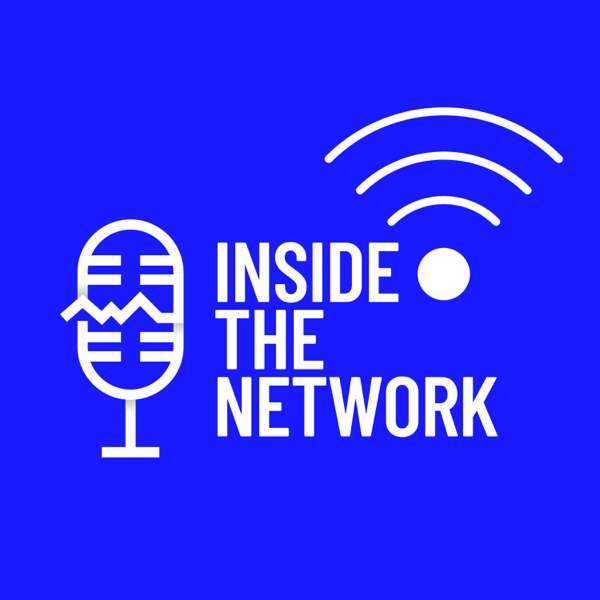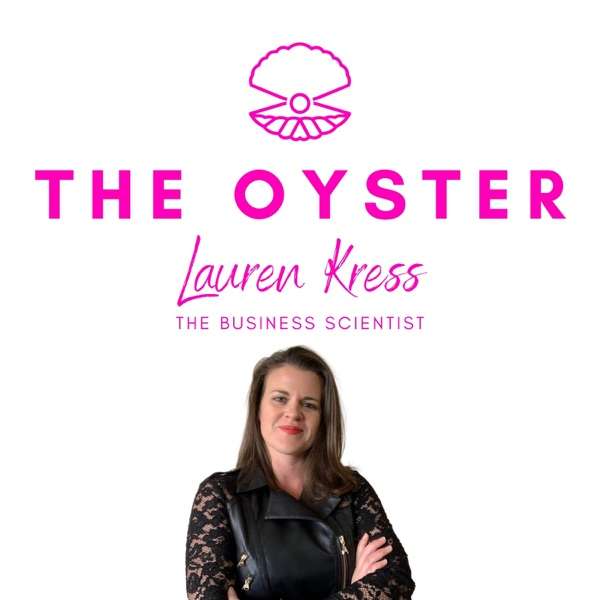Tricia Brouk is a performance expert, TEDx organizer, writer, director, choreographer, podcast host, and producer of theatre, TV and film. She hosts The Big Talk, a podcast series on iTunes and currently directs and dramaturges Big Talks and Keynotes. She is the current organizer of TEDxLincolnSquare – Risk Takers and Change Makers.
She has produced, directed or choreographed several award-winning theatre and TV/Film productions. Through her company, The Big Talk, she helps people identify, craft and deliver a life-changing Big Talk or Keynote.
Period in full time business and business background
She has owned a company for over 26 years. She moved to New York City from Missouri to pursue a dance career and had no interest in being a starving artist. She started Brouk Moves, an elite in-home personal training company where she hired people to work for her so that she could still make money even when she was on the road. The company has been going strong, has 15 trainers, 25 clients and recently started a personal chef service. The business has enabled her to pursue a creative life outside of business and also given her the opportunity to create a new business, The Big Talk.
Brouk Moves has been her primary income for the last 26 years and has enabled her to pay all her bills, avoid the life of a starving artist and produce theatre. Her team works on the business full time so she can have time to pursue other things.
Starving artists
She says she sees this a lot in the industry and she has observed that artists feel unworthy of making money, because when they make money they then feel that they are selling out, and that they are not truly artists.
She says artists deserve to be paid for what they are worth, to have money and create art simultaneously.
Tip: You are not giving up your artist soul by taking a big fat pay check
First gig
In her first big European tour, she got a weekly pay check to do what she loves including touring, dancing, and being a full time artist. That was while Brouk Moves was still bringing in money because her team was doing all the work. That when she knew she could make a living as an artist in the long term while also making a living as a business woman.
Tip: Once you pursue and achieve what your goal is, do not let go of that business! Do not think that you have to choose. You can maintain them both equally
Getting into entrepreneurship
She decided early on that she would live the way she wanted without being poor or waiting for gigs to find her. She is proactive, mindful and kind in the way she runs her business. Her trainers take time off whenever they want and the rest sub for them.
Tip 1: Stop waiting for that big artist contract, start creating your art, start creating your business, because if you wait for someone else to do it for you, you will spend your entire life waiting.
Tip 2: Get busy, create art no matter where it is, no matter what it is. Keep your artist muscle flexing and find a way to make money on your own terms
The first months in the fitness business
She started by working very hard and personally training all the clients she had. She used to wake up at 4.30am and would do the client training while also dancing and performing. Once she realised that she could hire a team to take on some of the work, she created a system where she could always be involved but didn’t need to be there. That enabled her to reduce her commutes, and her time was spent doing other things. When she hired other people, she had to trust them, let go, and make sure that she put systems in place to ensure the business would run efficiently.
Tip 1: If you are starting up, you have to dig in, roll up your sleeves and do the work
Tip 2: When starting out, you have to create a solid foundation first, then you can back off and do the other things that you want to do
Choosing personal training
She says personal training was very organically connected to her life as a dancer. It was directly related to what she was doing. She also realised that there was a huge market for it in New York City. It was a niche she could get into and make a lot of money. The business is now very saturated but when Tricia started The Big Talk, she found her second niche because Talk is a massive market. She feels fortunate that she has now created a new business in a new market niche that is not saturated yet.
Niching
Tip 1: If you can find something that you are an expert at, create a niche for people who need what you are offering
Tip 2: You have get very specific in what it is you are offering and find those people who want what it is you are selling
Parallels: Getting clients for the fitness business and for the Big Talk
She has always approached clients with honesty and integrity while sharing that she would be their biggest cheer leader, and get them across the finish line.
Growth strategy for The Big Talk
When she started Brouk Moves, she had never advertised for her fitness service because she got all her clients from word of mouth. That was not an option for The Big Talk, so she hired a marketing strategist and a visibility strategist. As soon as she learnt what she was supposed to do, she did it without worrying about making mistakes because she could fix the mistakes. She wanted to do it as fast as she could because she knew it was an exciting opportunity to work with speakers and help them share their message.
She hired the right people to help her set up a sales funnel, marketing and all her social media. From there, clients started coming. In the last year, it has grown immensely. She has 126 episodes of The Big Talk, she has an online course and became a TEDx organizer.
Transitioning into the speaking space
She believes she is still doing what she set out to do 26 years ago by helping speakers achieve their goals. When she is working with a speaker, she works with them just like she would with an actor or performer. She theatricalises their talk and performance. The transition has been organic for her because it’s the same exact thing for her with a different platform.
How she started The Big Talk
In August 2016, she met with Jamie Broderick, a visibility strategist, who needed her help in developing her TEDx script. Their working together was a huge success and Jamie encouraged Tricia to start helping speakers on a professional level, and that inspired her to start The Big Talk. Tricia actually ended up hiring Jamie to work with her for 3 months, in creating a strategy for The Big Talk, including making sure her website had opt-ins, the SEO was effective, she had a LinkedIn profile, a Facebook page, and a strong social media presence.
Jamie then introduced Tricia to several people who would have been interested in working with a public speaking coach. From there, she introduced Tricia to John Lee Dumas, the host of the EOFIRE podcast, who advised her to do podcasts talking about her process in order to get credibility. She started a podcast and did 20 episodes. She made the podcast part of her brand, then started working with speakers. Her desire to put her speakers on a stage led her to apply for a TEDx license; she got it, and became the TEDx Lincoln Square organizer. That enabled her to give some of her speakers a platform.
She then figured that she needed to grow the business and reach people outside of New York City who couldn’t work with her face to face. So she developed an online course for such people.
Importance of introductions in business
She says they are everything. Whenever she is introduced to someone, she never has expectations that she will land them as a client. She always expects that the right people will cross her path.
Tip: Business is introductions, business is relationships. If you are on LinkedIn and you connect with someone and immediately sell something to them, that’s not a relationship. If you can be open to who you are introduced to without having any expectations, that will lead you somewhere.
The first podcast interviews and their impact
At first she didn’t know what she was doing with the podcast interviews. She doesn’t know how to do many things but she always figures it out, does the research, hires the right people or asks for help.
She figured out how to start and run a podcast with the help of Jamie Broderick and her own research efforts. She wrote 20 podcasts, recorded them all in batch and put them all on Libsyn. She loved it and kept doing them from there. She made a big mistake in the first 20 episodes because she put them on a free platform which made it very difficult for her to move them to another platform.
The podcast taught people what Tricia was doing with The Big Talk, who was she was as an artist and a director of public speaking. She talked about the nuts and bolts of how to write a speech and how to give a speech. The first 20 episodes were 5 to 7 minutes long which Tricia learnt was too short. Since then she realised that her podcasts are really packed with content.
Tip 1: As an artist, you can share your work and sell yourself simultaneously
Tip 2: We all make mistakes when we are learning and its fine. We learn from our mistakes
Tip 3: Just because a platform is free, it doesn’t mean it will serve your business well. Do your research, ask people who have podcasts where they are, where they are hosted and do some background research on what it is you are doing.
Starting before things are perfect
When she realised that social media is everything with relationships and business, she had to let go of being perfect because she would make errors in her posts all the time, but she would always correct them
Tip 1: You should always start before things are perfect because they are never going to be perfect
Tip 2: If you can do a little bit more research than you think you should, it will save you time and money in the end.
Tip 3: You should not slow yourself down because you don’t have the time or money. You just need to do it and if you make a mistake, you can fix it
Tip 4: The second you decide that you’re going to be out there, you will be judged, so expect it so you can learn to get used to it
Mentors
Tricia believes and invests in mentors. She hired Jamie Broderick for $3,000 for 3 months. That was money well-spent for Tricia because she worked Jamie for every second of every day for those 3 months. For her podcast and other related content, Tricia used to ask her friends to look into them and give her feedback so she could learn how to improve on them.
Tip: You can invest in the right mentors and you can also invest in mentors who don’t require payment like friends and family who are interested in giving you guidance
Getting the first paying speaker
When she was in a call with Success Connection, a networking organization that Jamie Broderick runs, she spoke to a member (Christine) of the organization who wanted to do a TEDx. So, they got on a phone call later and Christine told her that she had been talking about rare eye disease which got Tricia really interested in helping her develop her talk.
They started by doing an active listening session and in the end Tricia highlighted that the talk wasn’t about raising awareness, finding a cure or raising money for the rare eye disease community, but was about how she learnt to see the world differently through the eyes of her children. That made Christine realise that she could talk about the disease in order to help other parents learn that their lives would not be over because of the rare eye disease. Christine was Tricia’s first paying client. From there, she has had 7 paying clients and it continues to grow.
Becoming a TEDX organizer
When she decided to create an event to give speakers a platform, she looked into TEDx and they...

 Our TOPPODCAST Picks
Our TOPPODCAST Picks  Stay Connected
Stay Connected







